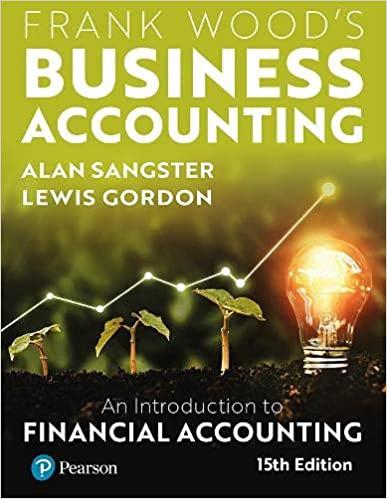Ebonys business establishes an allowance for doubtful debts at the end of each financial year based on
Question:
Ebony’s business establishes an allowance for doubtful debts at the end of each financial year based on both a review of individual debts and a careful analysis of her recent debt collection experience.
Her business also offers a prompt payment discount of 2% for payment within 14 days. She records every sale at its full price, and records discounts allowed if and when her customers take advantage of them. At the end of the year, she makes an allowance for prompt payment discounts in relation to amounts outstanding from those customers she expects to take advantage of the discount.
On 1 January 2021, the balances brought down on the accounts for the allowance for doubtful debts and the allowance for prompt payment discounts were £3,290 and £809 respectively.
During 2021, Ebony made sales (before deducting any prompt payment discounts) totalling £837,000, she wrote off bad debts of £26,310, and her customers took prompt payment discounts of £5,020.
On 31 December 2021, her trade receivables amounted to £104,000. Of these, £43,000 had been owing for less than 14 days, and 70% of this £43,000 was due from customers that normally take up the discount. After a careful review, she also determined that an allowance for doubtful debts of
£3,830 was needed.
Required:
(a) Draw up the following accounts for Ebony’s year ended 31 December 2021:
(i) Allowance for doubtful debts;
(ii) Allowance for prompt payment discounts;
(iii) Bad debts expense;
(iv) Discounts allowed.
(b) On the basis of the information available, show extracts from the income statement for the year ended 31 December 2021.
Step by Step Answer:

Frank Woods Business Accounting An Introduction To Financial Accounting
ISBN: 9781292365435
15th Edition
Authors: Alan Sangster, Lewis Gordon, Frank Wood





